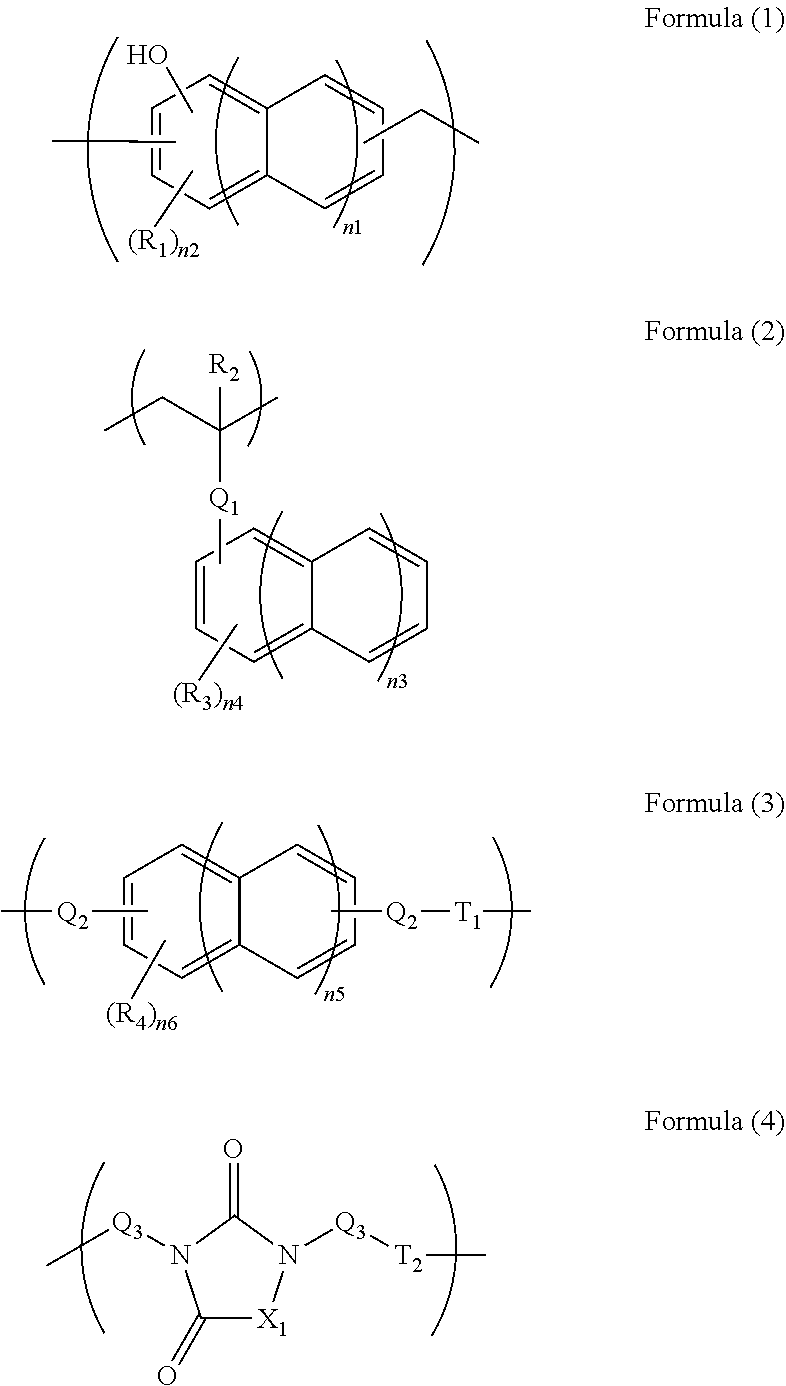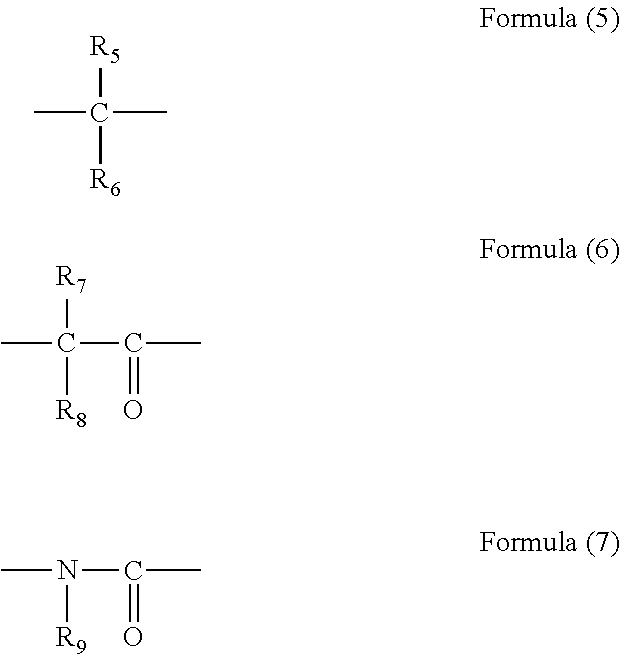Composition for forming resist underlayer film with reduced outgassing
a technology of resist and underlayer film, applied in the field of compositions for forming resist underlayer films, to achieve the effect of preventing volatilization of molecules, suppressing outgassing, and suppressing the amount of outgassing
- Summary
- Abstract
- Description
- Claims
- Application Information
AI Technical Summary
Benefits of technology
Problems solved by technology
Method used
Image
Examples
synthesis example 1
[0082]In 34.10 g of propylene glycol monomethyl ether, 5.00 g of monoallyldiglycidylisocyanuric acid (manufactured by Shikoku Chemicals Corporation), 3.32 g of 5-hydroxyisophthalic acid, and 0.21 g of benzyltriethylammonium chloride were dissolved, and then the whole was reacted at 130° C. for 4 hours to give a polymer compound solution. The obtained polymer compound corresponded to Formula (4-2) and had a weight average molecular weight of 17,000 in terms of standard polystyrene. The obtained polymer contained a triazinetrione ring and a benzene ring at a total content of 69% by mass in terms of cyanuric acid and in terms of benzene ring, respectively.
synthesis example 2
[0083]In 204.50 g of propylene glycol monomethyl ether, 11.00 g of tris(2,3-epoxypropyl)isocyanuric acid (Nissan Chemical Industries, Ltd., trade name TEPIC), 39.50 g of 3,5-diiodosalicylic acid, and 0.63 g of benzyltriethylammonium chloride were dissolved, and then the whole was reacted at 130° C. for 4 hours to give a polymer compound solution. The obtained polymer compound corresponded to Formula (4-4) and had a weight average molecular weight of 1,200 in terms of standard polystyrene. The obtained polymer contained a triazinetrione ring and a benzene ring at a total content of 27% by mass in terms of cyanuric acid and in terms of benzene ring, respectively.
synthesis example 3
[0084]A solution of 16.00 g of 2-vinylnaphthalene, 2.00 g of glycidyl methacrylate, and 2.00 g of 1-butoxyethyl methacrylate dissolved in 60.8 g of cyclohexanone was heated to 80° C. To the solution, a solution of 0.20 g of azobisisobutyronitrile dissolved in 20 g of cyclohexanone was slowly added. After the completion of the addition, the whole was reacted for 24 hours at 80° C. to give a polymer compound solution. The obtained polymer compound corresponded to Formula (2-1) and had a weight average molecular weight of 6,000 in terms of standard polystyrene. The obtained polymer contained a naphthalene ring at a content of 79% by mass in terms of naphthalene.
PUM
| Property | Measurement | Unit |
|---|---|---|
| thickness | aaaaa | aaaaa |
| temperature | aaaaa | aaaaa |
| temperature | aaaaa | aaaaa |
Abstract
Description
Claims
Application Information
 Login to View More
Login to View More - R&D
- Intellectual Property
- Life Sciences
- Materials
- Tech Scout
- Unparalleled Data Quality
- Higher Quality Content
- 60% Fewer Hallucinations
Browse by: Latest US Patents, China's latest patents, Technical Efficacy Thesaurus, Application Domain, Technology Topic, Popular Technical Reports.
© 2025 PatSnap. All rights reserved.Legal|Privacy policy|Modern Slavery Act Transparency Statement|Sitemap|About US| Contact US: help@patsnap.com



